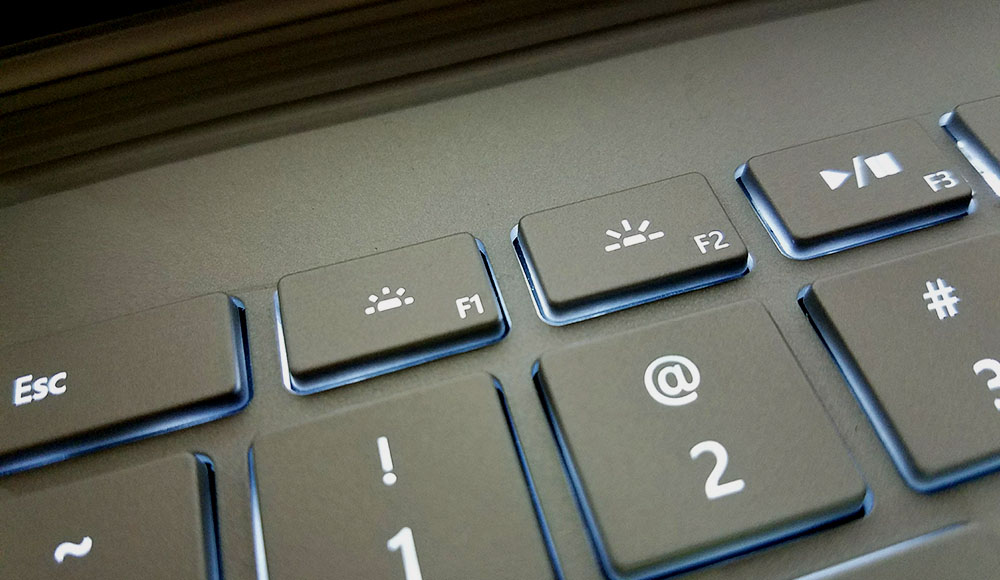

Then, after loading the ddcci kernel module, one can use any backlight utility.
#Brightness keys code
# ddcutil getvcp 10 VCP code 0x10 (Brightness ): current value = 60, max value = 100 # ddcutil setvcp 10 70Īlternatively, one may use ddcci-driver-linux-dkms AUR to expose external monitors in sysfs. # ddcutil capabilities | grep "Feature: 10" Feature: 10 (Brightness) The kernel module i2c-dev may need to be loaded if the /dev/i2c-* devices do not exist.ĭdcutil can be used to query and set brightness settings: Settings available via the OSD (On-Screen Display) panel can usually also be managed via DDC. DDC can control brightness, contrast, inputs, etc on supported monitors. When using this method, you need to use lspci first to find out where your graphic card is.ĭDC/CI (Display Data Channel Command Interface) can be used to communicate with external monitors implementing MCCS (Monitor Control Command Set) over I2C. Not all of the graphic cards support this method. It means you adjust the backlight by manipulating the hardware directly, which can be risky and generally is not a good idea. Intel Mobile 945GME ), it is possible to set the register of the graphic card to adjust the backlight. Tip: To set the backlight depending on power state, see Power management#Using a script and an udev rule and use your favourite backlight utility in the script. etc/udev/rules.d/les ACTION="add", SUBSYSTEM="backlight", RUN+="/bin/chgrp video $sys$devpath/brightness", RUN+="/bin/chmod g+w $sys$devpath/brightness" To allow users in the video group to change the brightness, a udev rule such as the following can be used: # echo 5 > /sys/class/backlight/acpi_video0/brightnessīy default, only root can change the brightness by this method. Attempting to set a brightness greater than the maximum results in an error. The brightness can be set by writing a number to brightness. $ cat /sys/class/backlight/acpi_video0/max_brightness 15 The maximum brightness can be displayed by reading from max_brightness, which is often 15. $ ls /sys/class/backlight/acpi_video0/ actual_brightness brightness max_brightness subsystem/ uevent The directory contains the following files and subdirectories: If you use an Intel card, simply replace acpi_video0 with intel_backlight in the examples. In the following examples, acpi_video0 is used. In the case of an Intel card, the directory is called intel_backlight. In this case, the backlight is managed by an ATI graphics card. The name of the directory depends on the graphics card model. An interface to this module is provided via a sysfs(5) directory at /sys/class/backlight/.

The power level can often be controlled using the ACPI kernel module for video. The brightness of the screen backlight is adjusted by setting the power level of the backlight LEDs or cathodes.
#Brightness keys driver
6.8 Backlight is always at full brightness after a reboot with amdgpu driver.6.7 xbacklight returns : No outputs have backlight property.6.4 sysfs modified but no brightness change.6.3 Unable to control eDP Panel brightness (Intel i915 only).6.2 Inverted Brightness (Intel i915 only).6.1 Backlight PWM modulation frequency (Intel i915 only).5.2 Xorg: adjust perceived brightness with xrandr.It is during that time that you can also select Recovery Mode or Recovery Menu and having it set to zero can mean you have to be Super Fast with your finger on the Left Shift Key to grab it. But then, they also keep their monitors hanging upside down, too. You can set it to 7 seconds or ten seconds just as easily… If you set it to five seconds, then it will wait that amount of time before vanishing, for you to make a selection on that menu. If your timeout is set to 0 seconds, you probably won’t even see it. When you begin the boot up, a Loading Menu will run.
What the Timeout does at zero or at five seconds: If you are freshly migrating to Linux, you may need to access that recovery menu before long and it would be better to have it easily accessible. The reason behind the time out (This will increase your boot time by about ten seconds) is to ensure you can access the Recovery Menu easily if you need to. While you are in there… You Might consider changing grub timeout to 5


 0 kommentar(er)
0 kommentar(er)
